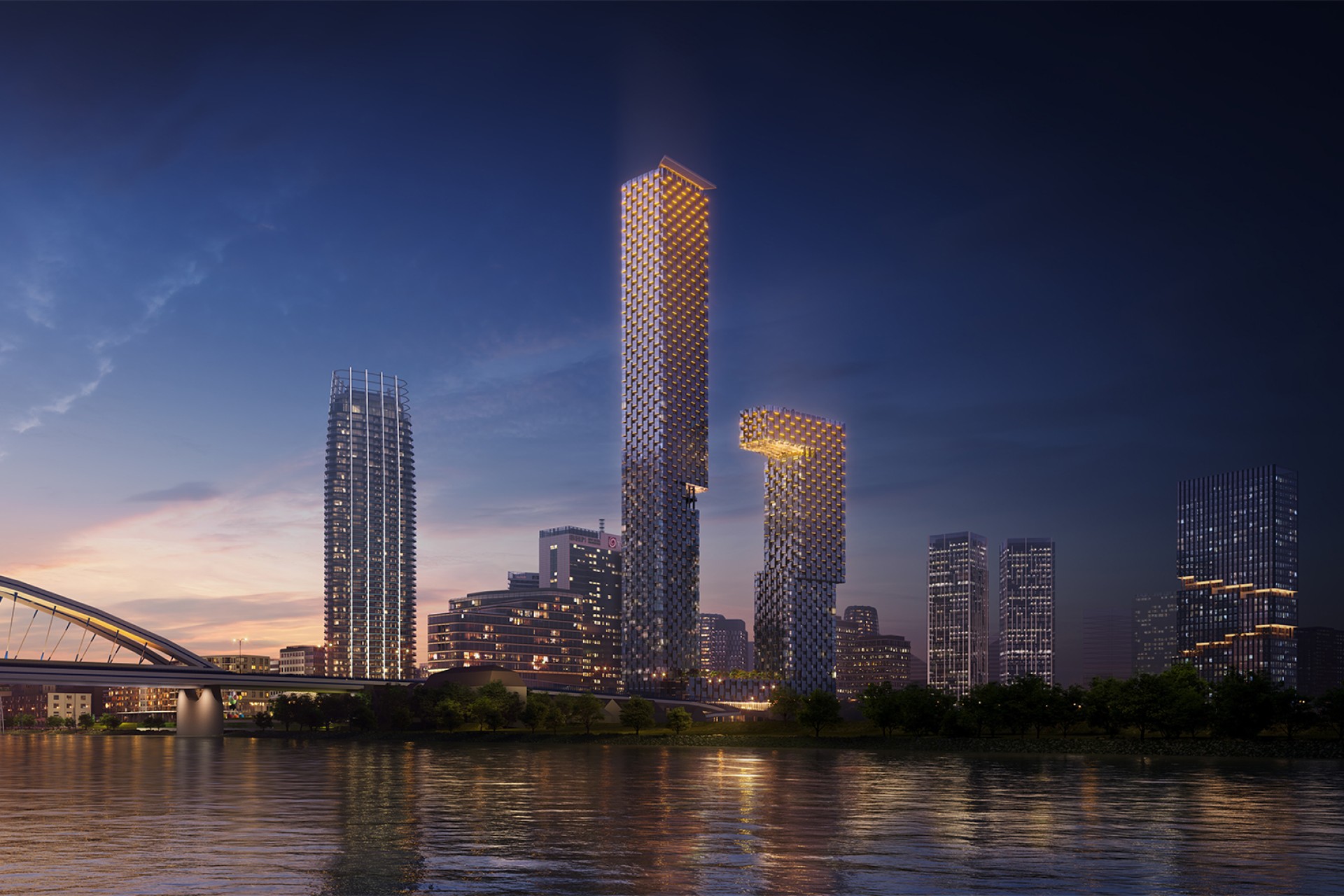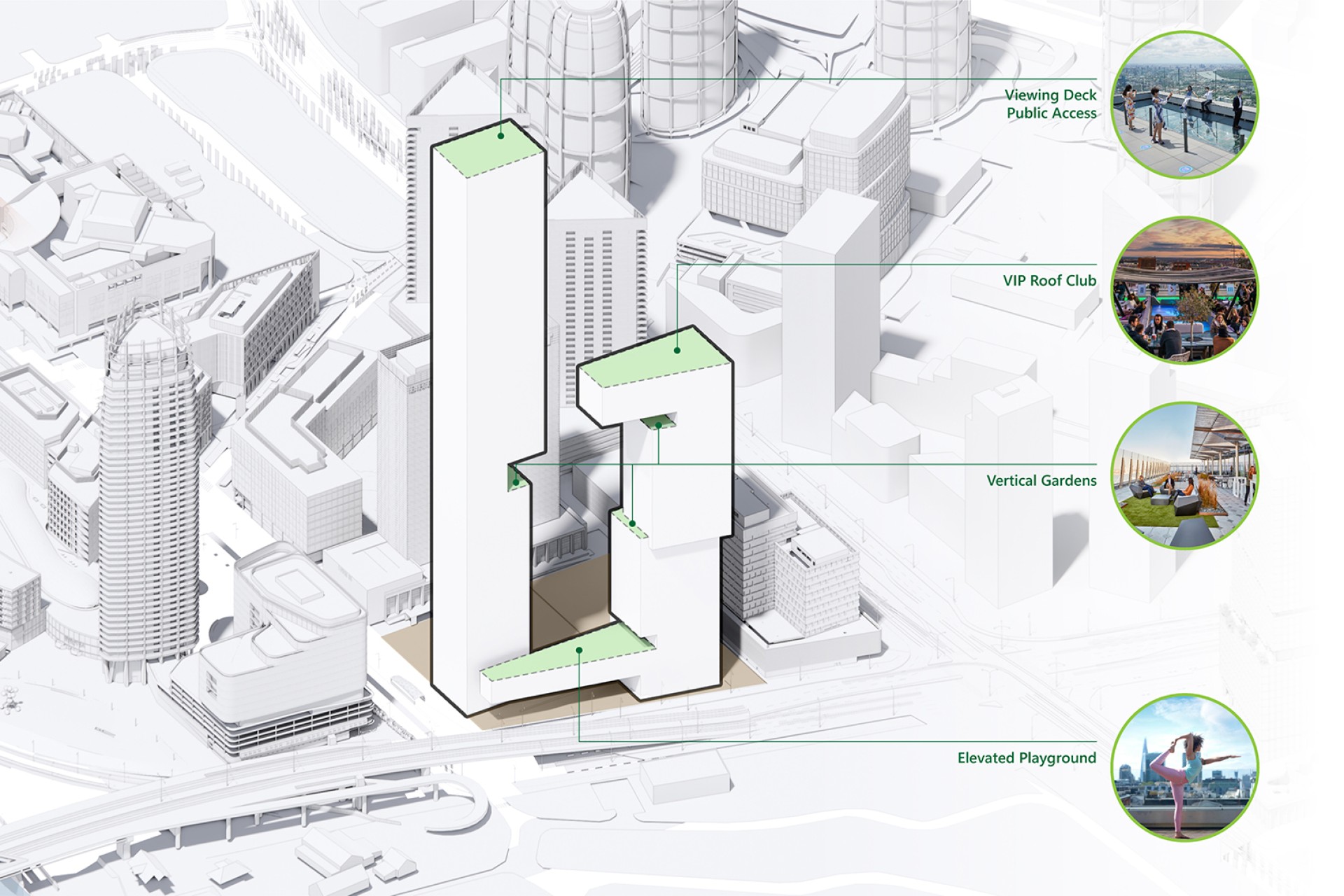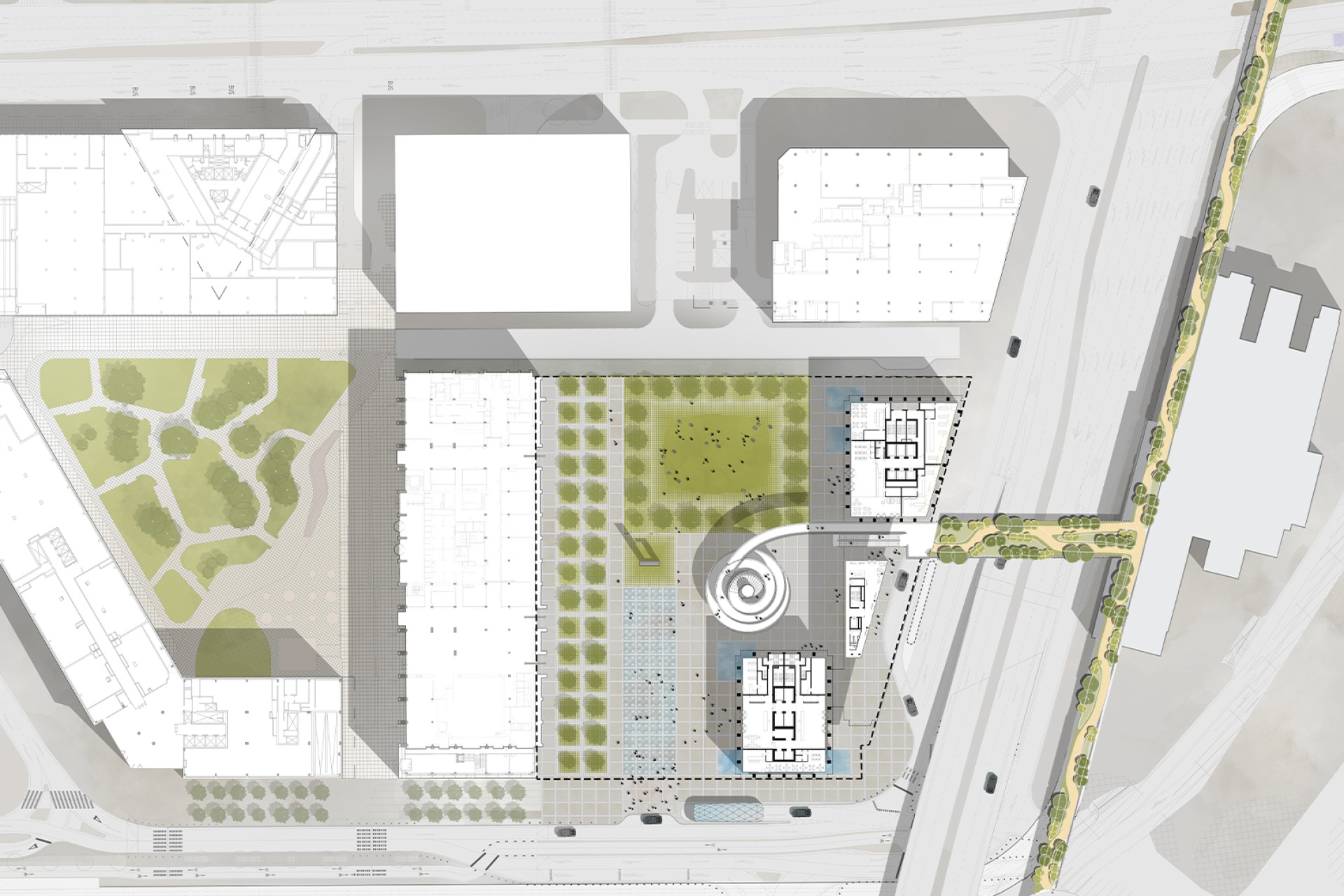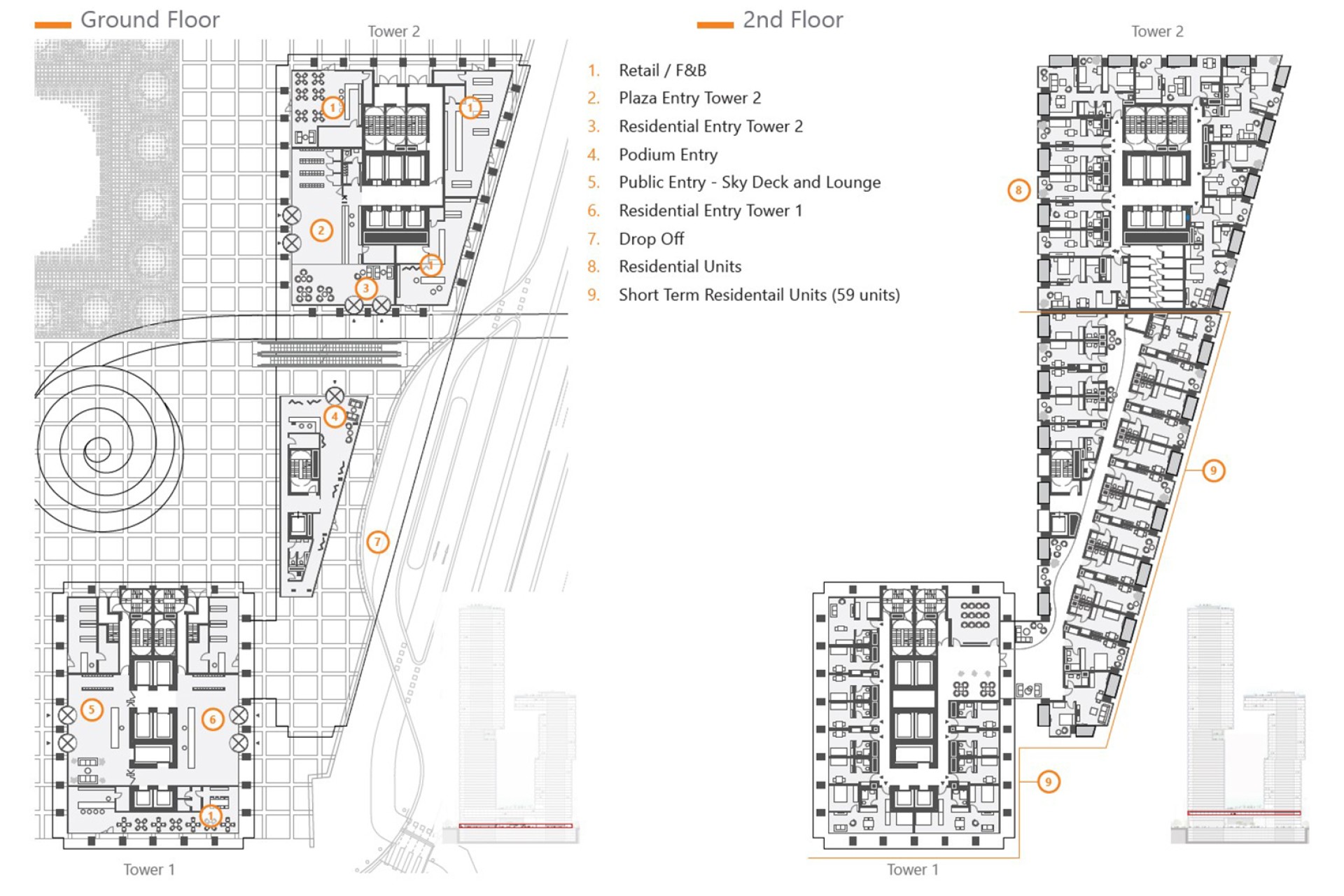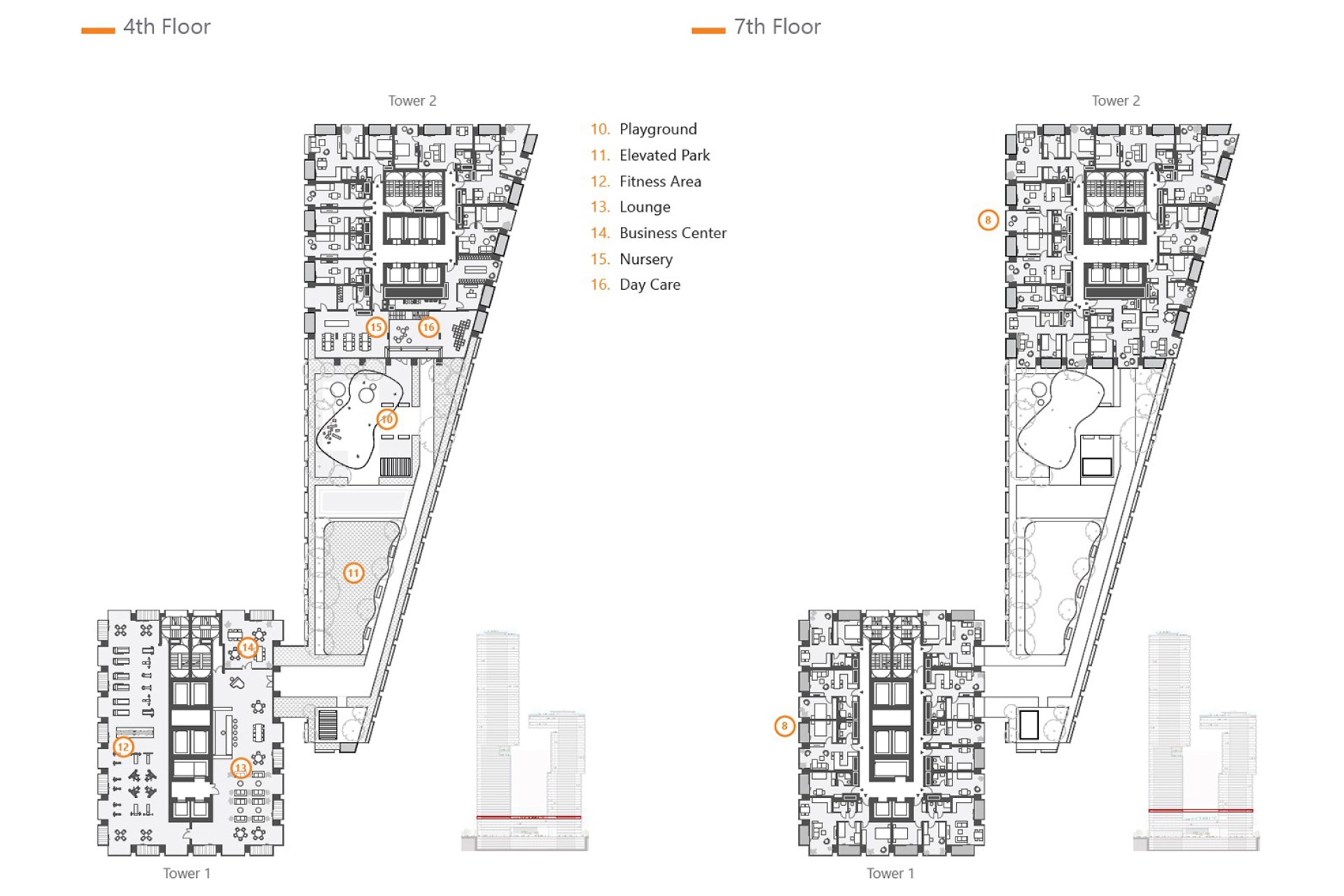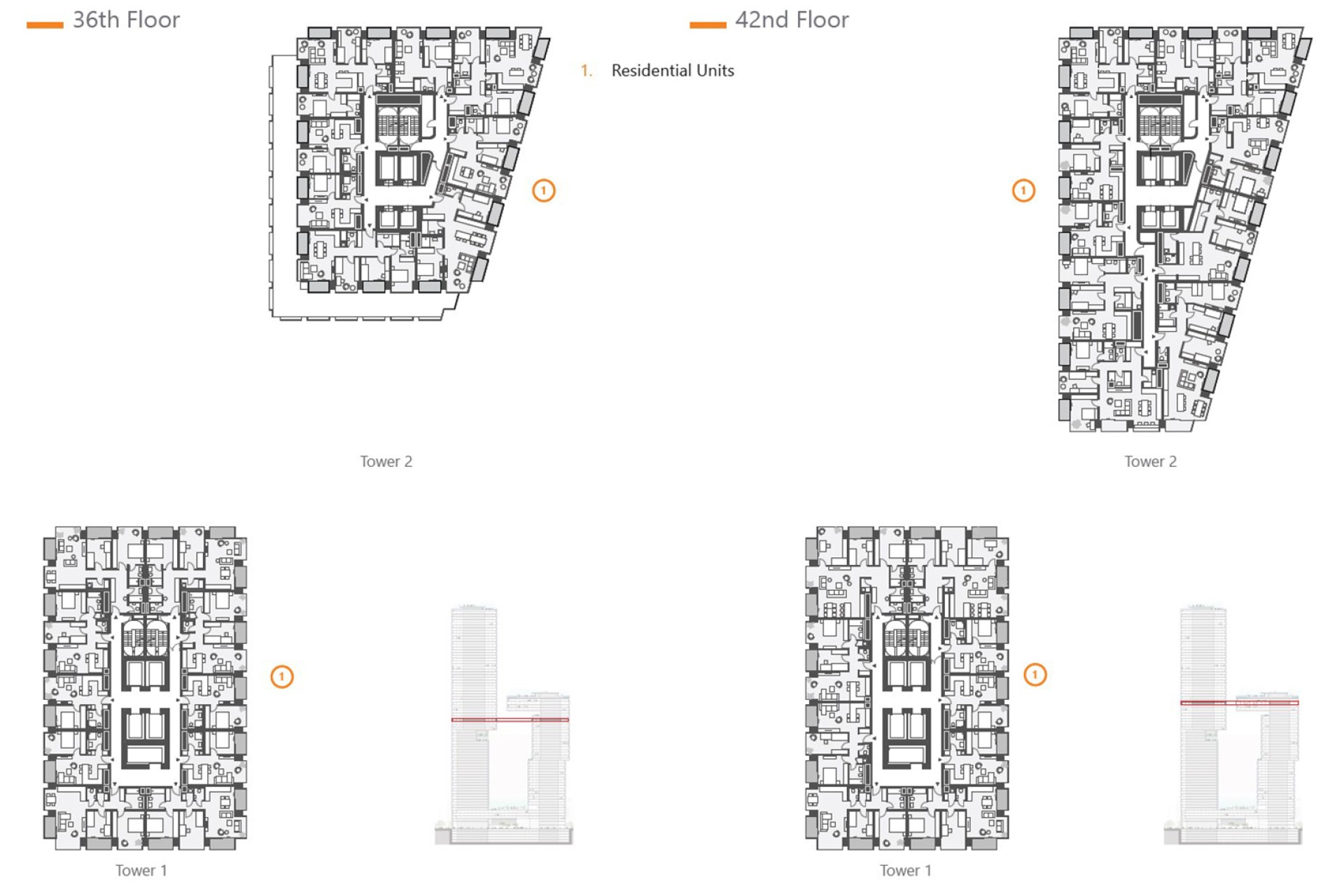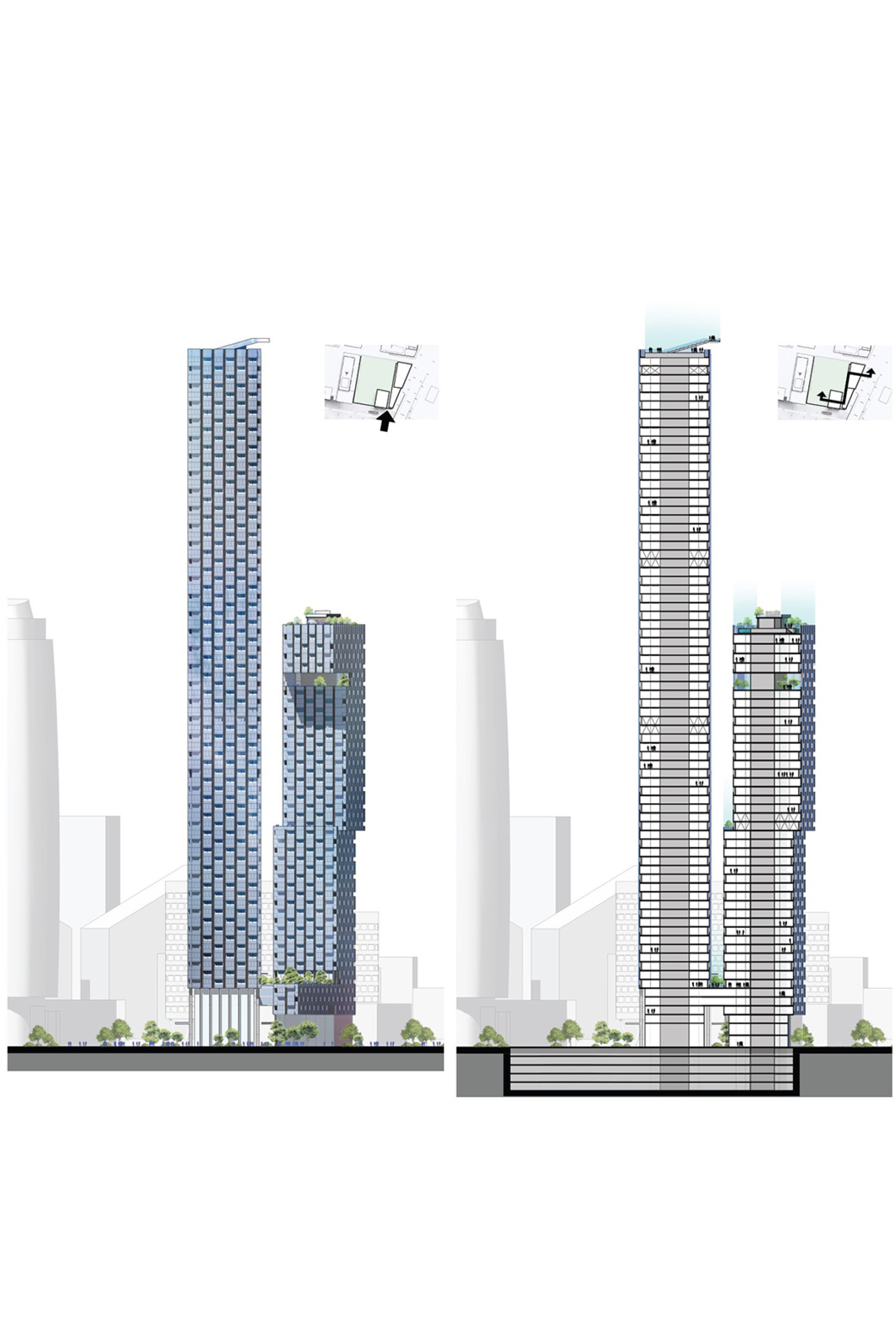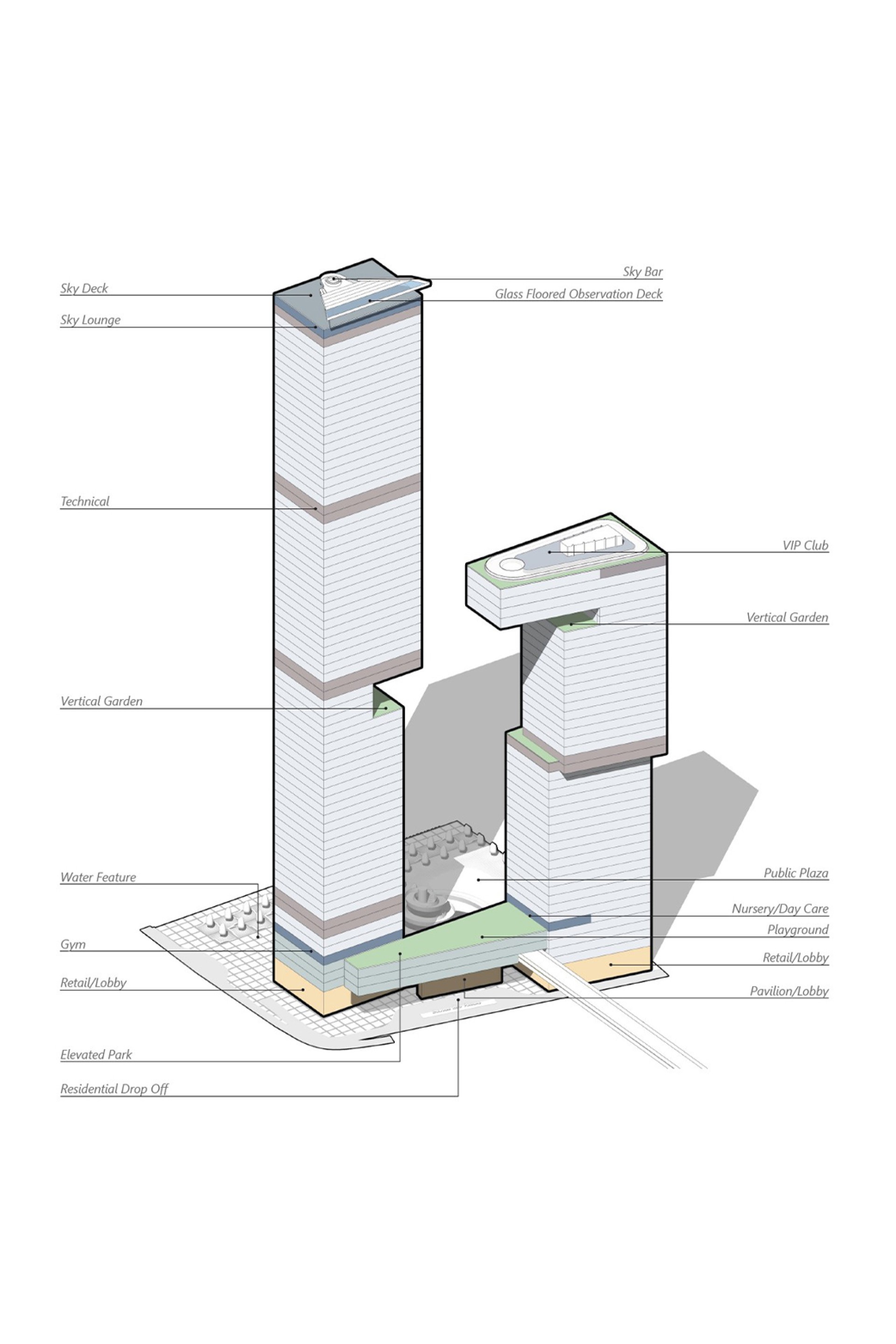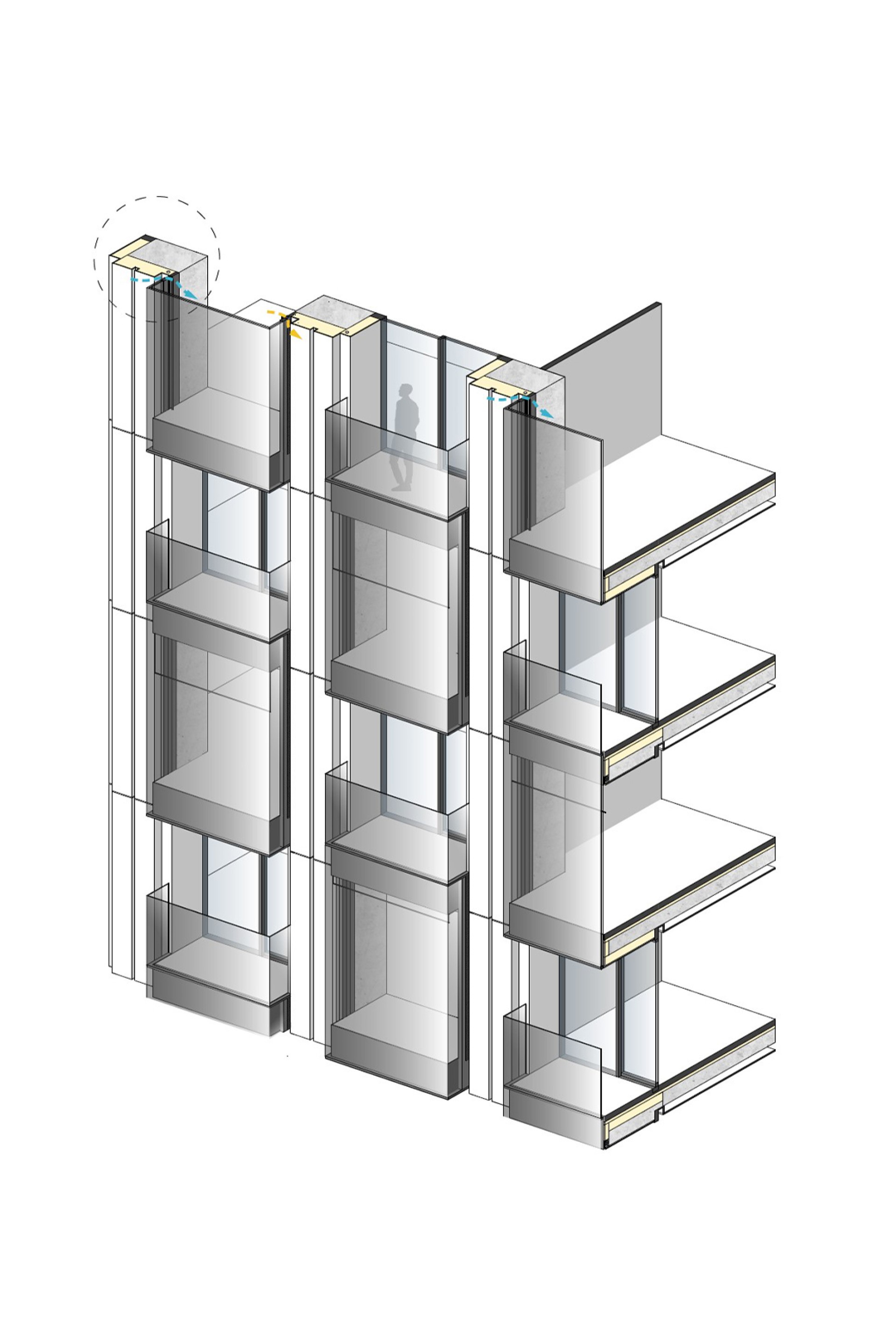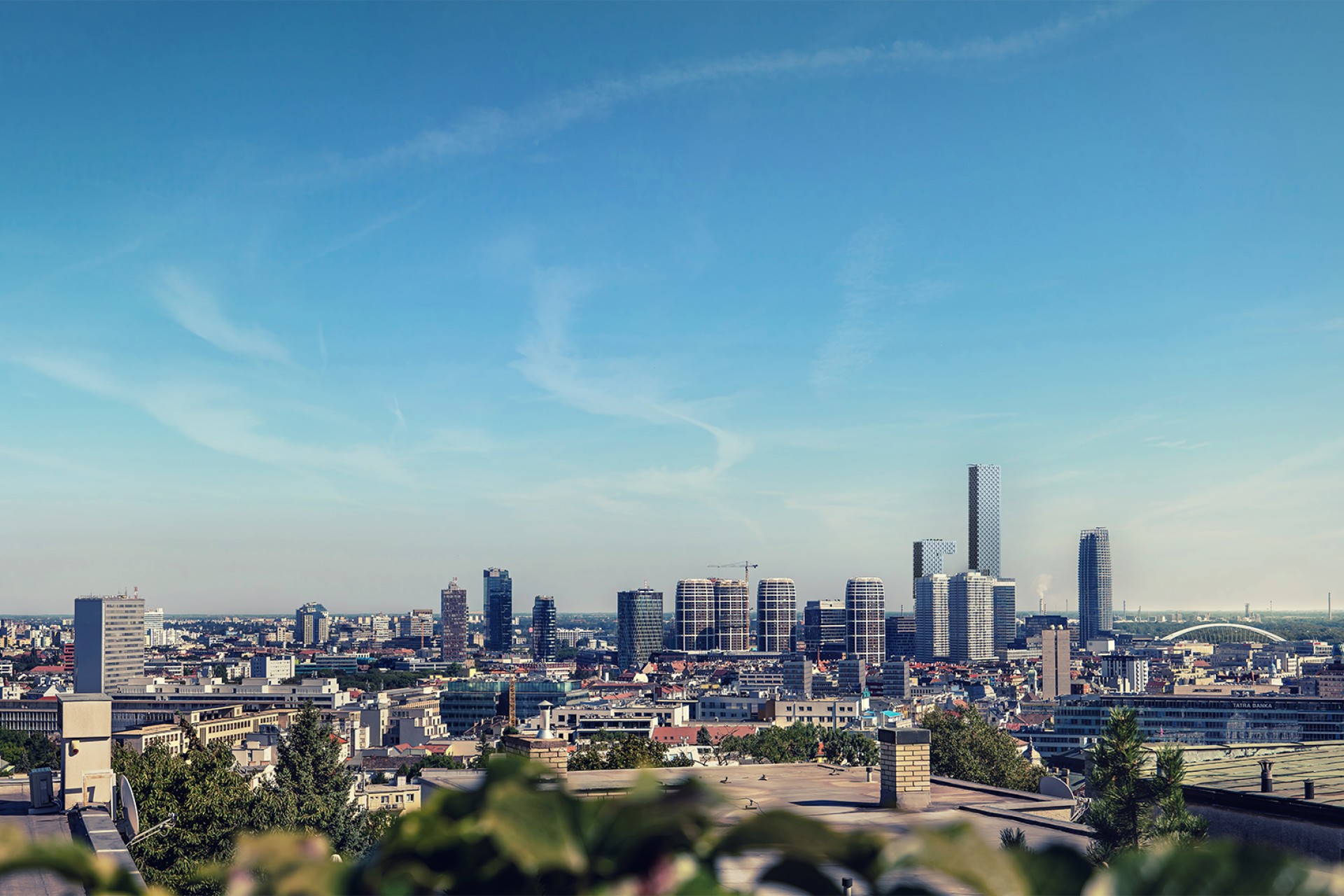The project description
B2 Towers is a design for a pair of high-rise buildings, which was created as part of an architectural competition with the aim of defining a new level of urban and architectural standards in Bratislava. The composition of the two towers with heights of 260 and 156 meters was designed to originally complete the city panorama and contribute to its clearly memorable silhouette.
The main motive of the design was to create a self-confident spatial gesture that, with its material design, will harmoniously integrate these new dominants into the existing structure of high-rise buildings. The towers are composed so that their volumes optimally respond to important views from the city center, the Danube embankment and other significant places in the vicinity.
A key element of the design is an attractive public space that is connected to the surrounding urban structure. The multifunctional plaza is conceived as a dynamic social space that connects the Danube embankment, the Eurovea shopping center and the surrounding city districts through new pedestrian areas and green corridors. These connections ensure a smooth and logical mobility within the site while emphasizing the priority of pedestrians and cyclists.
An important part of the design is the overpass of Košická Street, which will provide a safe and convenient connection between the project and the developing Mlynské Nivy zone. This element not only improves the functional connection of individual parts of the city, but also contributes to the aesthetic quality of the space. The overpass in the form of a rising ramp, designed as a sculptural element, creates a visual experience and serves as a recognizable landmark.
The concept of public space is designed with an emphasis on inclusiveness and flexibility of use. The variable nature of the square allows it to be adapted to current needs, whether it is organizing of cultural events, markets or community meetings.
The structural solution of the towers itself is based on the static principle of "tube in tube", which combines an inner concrete core with external columns connected by floors, ensuring exceptional stability and enabling the creation of generous and flexible living spaces.
The facade design is formed by a rhythmic alternation of vertical columns, panoramic windows and balconies. This approach ensures natural ventilation, plenty of daylight and a smooth transition between the interior and exterior. Panoramic windows increase the quality of living spaces and provide residents with a direct connection to the surroundings.
The project emphasizes sustainability and efficient use of resources. Photovoltaic panels cover part of the building's energy consumption, while rainwater harvesting systems support careful water management. Passive cooling systems and natural lighting reduce energy consumption and improve the indoor climate.
The scope of work
competition proposal
